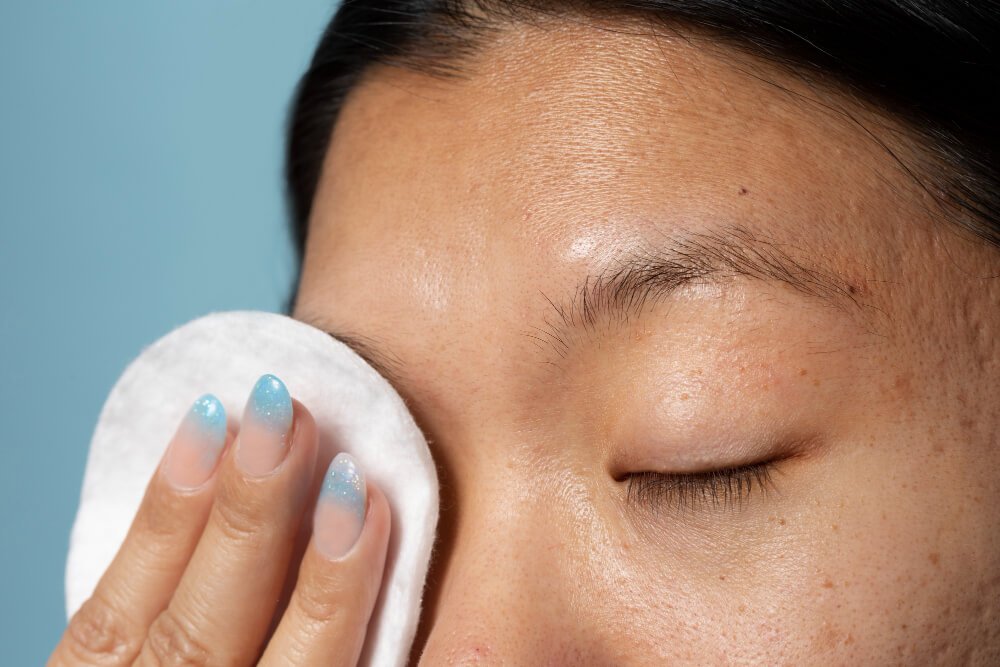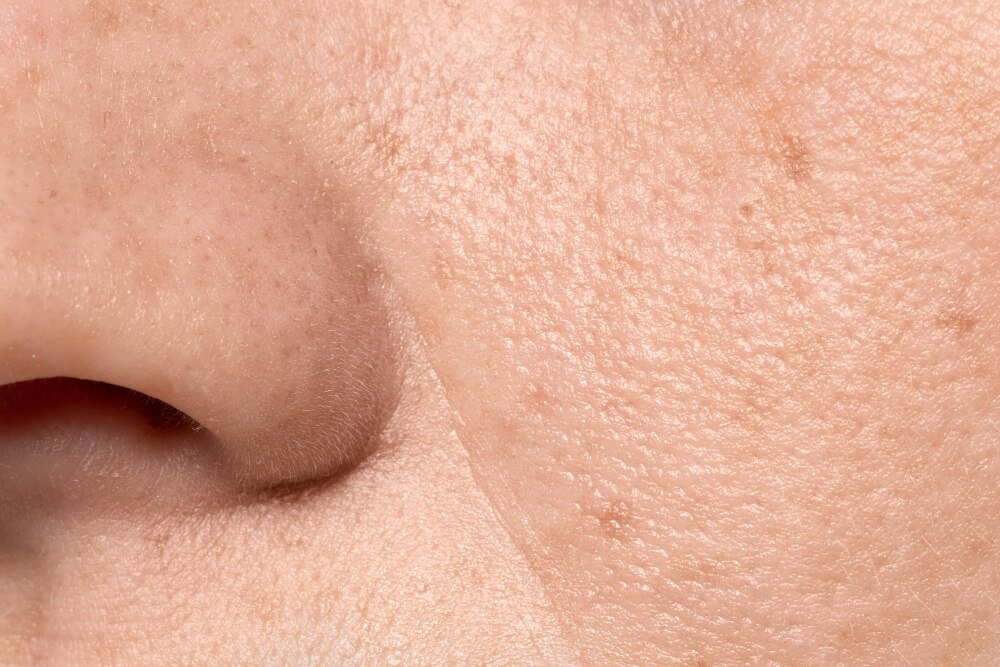When it comes to oily skin, many women feel trapped in a cycle of excess shine, clogged pores, and frequent breakouts. The idea of applying more oil to already oily skin may sound counterintuitive.
However, not all oils are created equal. Some natural oils are non-comedogenic (meaning they won’t clog pores) and can help regulate your skin’s sebum production while improving texture and glow.
Table of Contents
Understanding Oily Skin
Recent dermatological studies have shown that using the right oils can actually balance the skin’s natural barrier, prevent excessive oiliness, and even protect against acne.
If you’ve been searching for natural ways to keep your skin healthy, smooth, and youthful, incorporating the right oils for oily skin could be a game-changer in your daily skincare routine.
Discover how to help your skin renew itself faster, visit the official page now.
Why Does Oily Skin Happen?
Oily skin occurs when the sebaceous glands produce too much sebum—the natural oil that protects and hydrates the skin. While sebum is essential for maintaining skin health, an excess can lead to enlarged pores, acne breakouts, and a shiny appearance.
Factors that influence oily skin include:
- Genetics – if your parents have oily skin, you’re more likely to have it too.
- Hormonal changes – fluctuations during puberty, menstrual cycles, or stress can increase oil production.
- Climate – hot and humid environments stimulate the sebaceous glands.
- Skincare habits – harsh cleansers can strip the skin, causing it to produce even more oil.
The Role of Oils in Balancing Sebum
The secret lies in using oils that mimic the skin’s natural sebum. These oils can send a signal to your sebaceous glands to slow down production, resulting in more balanced skin.
In addition, certain oils provide antibacterial, anti-inflammatory, and antioxidant benefits, making them ideal for oily and acne-prone skin.
Ready for youthful, radiant skin? See the full list of natural ingredients here.
Understanding Oily Skin: Why Does Oily Skin Happen?

Oily skin occurs when the sebaceous glands produce too much sebum, the natural oil that protects and hydrates the skin. While sebum is essential for maintaining skin health, an excess can lead to enlarged pores, acne breakouts, and a shiny appearance.
Factors that influence oily skin include:
- Genetics – if your parents have oily skin, you’re more likely to have it too.
- Hormonal changes – fluctuations during puberty, menstrual cycles, or stress can increase oil production.
- Climate – hot and humid environments stimulate the sebaceous glands.
- Skincare habits – harsh cleansers can strip the skin, causing it to produce even more oil.
The Role of Oils in Balancing Sebum
The secret lies in using oils that mimic the skin’s natural sebum. These oils can send a signal to your sebaceous glands to slow down production, resulting in more balanced skin.
In addition, certain oils provide antibacterial, anti-inflammatory, and antioxidant benefits, making them ideal for oily and acne-prone skin.
The Best Oils for Oily Skin That Don’t Clog Pores
1. Jojoba Oil: Nature’s Sebum Regulator
Jojoba oil is often considered the holy grail for oily skin. Structurally, it is very similar to the skin’s own sebum, which helps regulate oil production.
It is also non-comedogenic, lightweight, and quickly absorbed.
- Helps reduce shine by balancing oil levels
- Contains vitamin E and antioxidants that protect the skin
- Can be used daily as a moisturizer or mixed with other products
How to use: Apply 2–3 drops to damp skin after cleansing, or mix a drop into your daily moisturizer.
2. Grapeseed Oil: Lightweight and Antioxidant-Rich
Grapeseed oil is another excellent choice because it is light, fast-absorbing, and non-comedogenic. It is rich in linoleic acid, an omega-6 fatty acid that helps strengthen the skin barrier and reduce clogged pores.
Benefits include:
- Anti-inflammatory properties that help with acne
- Rich in antioxidants like vitamin C and polyphenols
- Improves skin elasticity and tone
How to use: Apply a small amount at night as a serum or use it for gentle facial massage.
Support your skin’s renewal naturally—click here to find out how.
3. Tea Tree Oil: Natural Antibacterial Power
Known for its potent antibacterial and antifungal properties, tea tree oil is a popular natural remedy for acne-prone skin. It helps kill acne-causing bacteria, reduces redness, and soothes inflammation.
- Best used as a spot treatment rather than all-over moisturizer
- Highly concentrated—should be diluted with a carrier oil like jojoba or grapeseed
- Helps unclog pores and prevent new breakouts
How to use: Mix 1–2 drops of tea tree oil with a teaspoon of jojoba oil and apply directly to blemishes.
4. Rosehip Seed Oil: Anti-Aging for Oily Skin
Rosehip seed oil is rich in vitamin A (retinoids) and vitamin C, making it perfect for young women concerned about early signs of aging. Despite being an oil, it is lightweight and absorbs quickly without leaving a greasy residue.
Key benefits:
- Brightens skin and reduces hyperpigmentation
- Stimulates collagen production for youthful-looking skin
- Non-comedogenic and balances oil levels
How to use: Apply a few drops at night before bed to improve skin texture and tone.
5. Squalane Oil: The Universal Skin Balancer
Derived from olives or sugarcane, squalane is a stable, lightweight oil that works well for oily and sensitive skin types. It mimics the skin’s natural lipids, helping to lock in moisture without clogging pores.
- Non-greasy and non-comedogenic
- Improves skin hydration and elasticity
- Helps calm redness and irritation
How to use: Use 2–3 drops after your serum or before moisturizer for long-lasting hydration.
How to Choose the Right Oil for Oily Skin: The Importance of the Comedogenic Scale
When selecting oils for oily skin, always consider the comedogenic scale—a ranking from 0 to 5 that indicates how likely an oil is to clog pores.
Oils like jojoba, grapeseed, rosehip, and squalane have a low comedogenic rating (0–2), making them safe for acne-prone and oily skin.
Tips for Safe Use of Oils
- Start with a patch test before applying to your entire face.
- Use oils in moderation—2–3 drops are usually enough.
- Apply oils on damp skin for better absorption.
- Incorporate oils into your night routine first to see how your skin reacts.
Home Treatments with Oils for Oily Skin: DIY Oil Cleansing Method
Oil cleansing can help dissolve excess sebum and impurities without stripping the skin. A gentle mix of jojoba oil and grapeseed oil can effectively cleanse while keeping the skin balanced.
Step-by-step:
- Apply 5–6 drops of oil blend to dry skin.
- Massage in circular motions for 2–3 minutes.
- Wipe with a warm damp cloth.
Nourishing Overnight Mask
Mix rosehip oil with a few drops of tea tree oil (diluted) and apply as a thin layer before bed. This combination helps brighten the skin while preventing breakouts.
Mistakes to Avoid When Using Oils on Oily Skin
- Using coconut oil or other heavy oils that are highly comedogenic
- Applying too much oil, which can overwhelm the skin
- Skipping proper cleansing before applying oils
- Expecting immediate results, consistency is key
Final Thoughts: Oils Can Be Your Ally
For young women with oily skin, choosing the right oils can transform skincare routines from frustrating to effective. Natural oils like jojoba, grapeseed, tea tree, rosehip, and squalane can balance sebum, prevent breakouts, and promote youthful, radiant skin.
Instead of fearing oils, learn how to use them wisely to support your skin’s natural balance. With patience, the right application, and consistent use, oils can be a powerful ally in achieving the healthy, glowing skin you desire.

